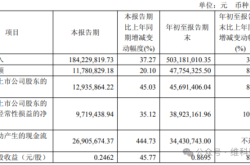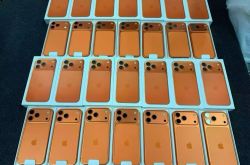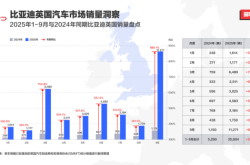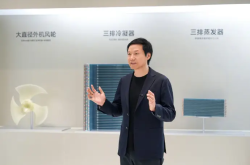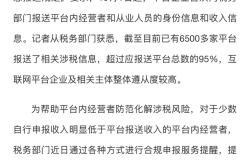Alibaba's AI to C strategy 'bets' on Quark: Can this video-watching tool become an AI marvel?
![]() 03/27 2025
03/27 2025
![]() 545
545
Quark, with its 'browser + cloud storage' genes, wants to transform into AI
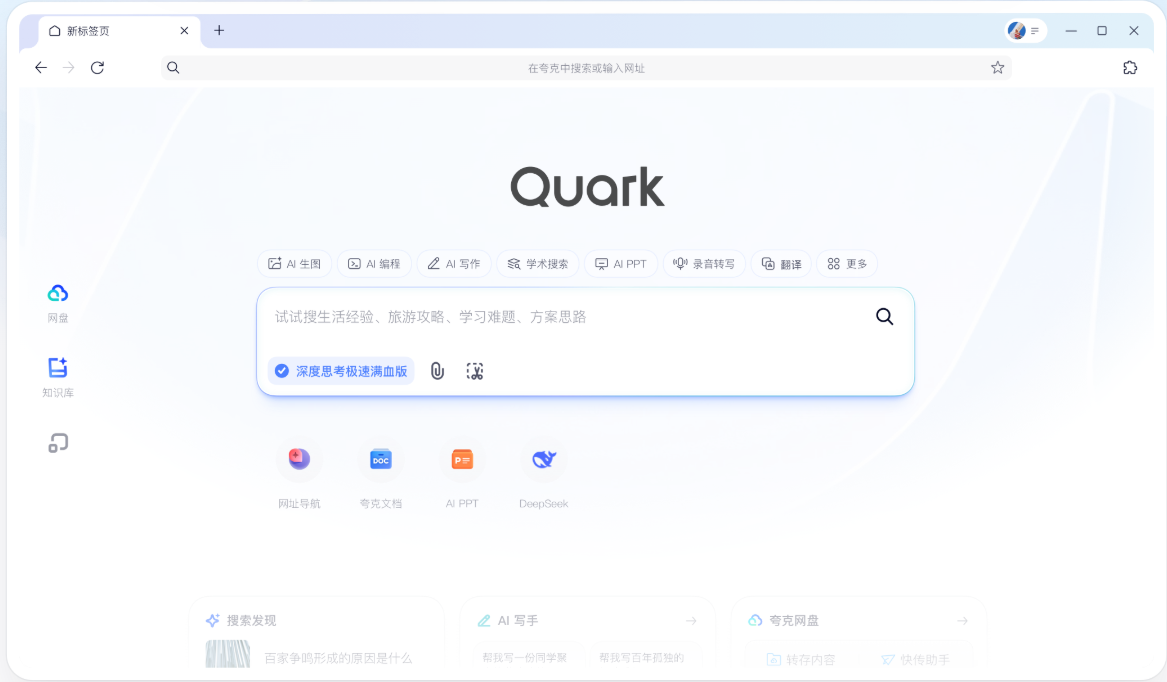
From being a 'geek treasure' browser fined 500,000 yuan for pornography, Quark has transformed into Alibaba's most powerful tool for exporting AI capabilities. Quark has completed a spectacular transformation.
On March 13, Alibaba announced the launch of its AI flagship app, the new Quark. Based on Alibaba's Tongyi's leading reasoning and multimodal large model, the new Quark has been comprehensively upgraded into a boundaryless 'AI Super Box'. Alibaba stated that the latest achievements of the Tongyi series models will be integrated into Quark first.
Alibaba said that the new Quark will bid farewell to traditional search and be upgraded into an All in One 'AI Super Box' to meet users' various AI needs for work, study, and life. Currently, the mainstream form of AI products in the market is Chatbot, but Quark hopes to go further by integrating AI dialogue, deep thinking, deep search, deep research, and deep execution into one Minimalism 'AI Super Box' to meet all users' needs.
Changes in organizational structure also demonstrate the importance Alibaba attaches to Quark.
According to Shixiang News, Wu Jia, vice president of Alibaba Group, concurrently serves as CEO of Quark. However, Quark, which was previously part of Alibaba's business, has never operated as an independent company or with an independent CEO. Within Alibaba, appointing a CEO for a specific business usually marks an increase in the business's strategic importance within the group and gives it higher autonomy and resource integration capabilities.
So, in this AI era, what kind of AI product for the general public does Quark aim to become? What are the advantages and disadvantages of Quark's AI to C? For an internet product with strong browser and cloud storage genes, how will Quark's organizational structure and product genes deeply affect its AI to C development process?
1
Can the new Quark really be an AI assistant that understands human speech?
Don't you find that current AI tools are really verbose when used in daily work?
For example, when an ordinary person is writing a popular science article and wants to do it perfectly, they need to use AI tools as much as possible. At this time, the writer needs to use Kimi to collect information, the CNKI AI academic research assistant to assist in viewing materials, DeepSeek to polish sentences, and Jimeng to generate illustrations. In this process, one often has to switch back and forth between different AI vertical applications, opening and closing the same windows, which is quite annoying. Moreover, it is difficult for these AI vertical products to directly meet users' expectations when used.
With this in mind, even when seeing a new AI application, AI tool users are likely to think, 'There's a new AI application? I'm too lazy to look.' So, is there a product that can unify all AI functions?
Quark, which boasts being an all-around assistant, seems to have emerged with an AI Super Box that integrates various vertical application functions.
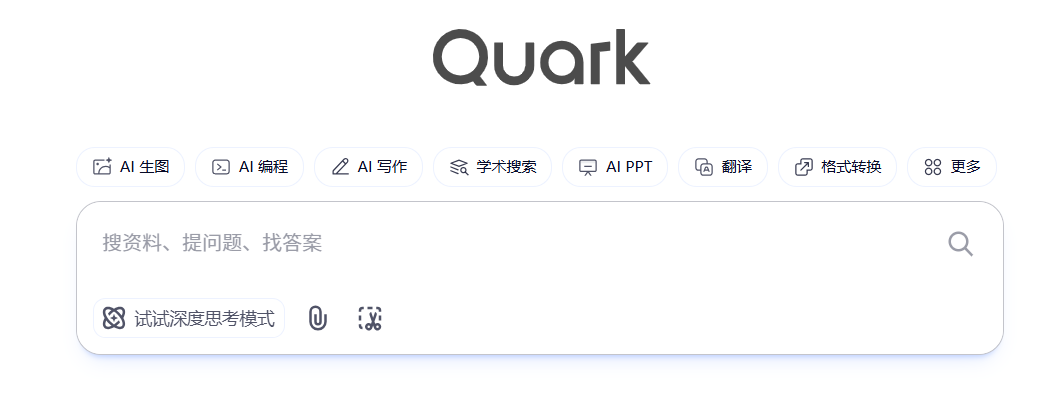
It is called an AI Super Box because the product designers hope to frame all AI functions mentioned or not mentioned above through AI capabilities. Regardless of which type of AI function the user wants, they can simply input it and call it, eliminating the need to think about which AI capabilities should be called upon in the past, greatly shortening the distance between the goal and the result.
For example, by directly inputting 'Help me make a PPT,' other AI products will probably tell you how to make a PPT, precautions for making a PPT, and how to beautify it with a bunch of useless and repetitive words. However, Quark can directly invoke the AI PPT function without requiring users to rack their brains to come up with a lengthy prompt. Instead, they can directly select the number of pages, language, style, and color, and then input the main creative theme.

In addition to invoking functions from the AI Super Box, the new Quark's search function also follows the same style. When users invoke AI search, the answer can no longer be dry text content or instructions on where to find the answer but directly provides the answer, eliminating the need for users to obtain the method and search for it themselves.
For example, when I give the request 'Help me find a speechless abstract emoji,' the new Quark can actually help me find an answer that meets my requirements, truly satisfying the requirements of being speechless and abstract, rather than telling me where to look and how to find it.
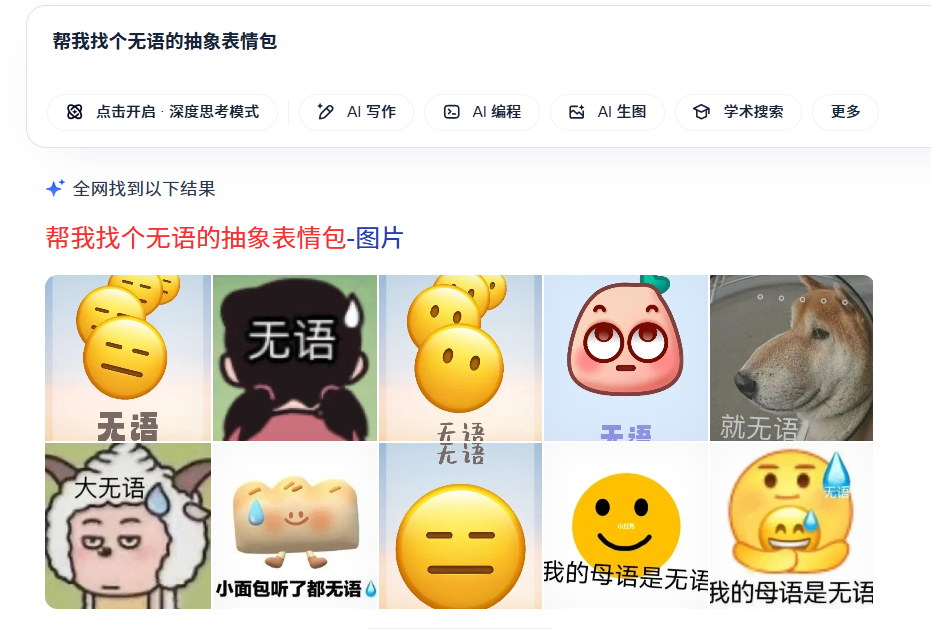
In summary, the AI Super Box essentially breaks down the walls between different functions and different forms of information flow and reconnects them using AI. Actions that once required users to take three, five, or even more steps can now be easily completed in a 'human-like' manner.
If we elevate to a higher level, that is, when competitors are still in the stage of 'users using AI,' Quark has already evolved to the stage of 'AI using AI' with the help of AI agents.
However, the new Quark is only the prototype of an AI agent and cannot fully liberate users yet. In specific use, I can still clearly feel that some functions cannot be invoked with a single sentence, such as AI programming and AI image generation, which still require invocation to use. However, this is much simpler compared to specifically opening a vertical application.
More importantly, for product design, the emergence of the AI Super Box has already taken the most important step. Next, Quark needs to continue moving forward on the established path to create a truly 'human-understanding' and 'human-like' AI entry product.
2
Will Quark replace Tongyi and take the top spot in Alibaba's AI?
After seeing the functions of the new Quark, you and I both know in our hearts. Although such a new Quark has taken the important position of 'Alibaba's AI flagship application,' its strategic and promotional significance is still greater than its practical significance.
And the biggest strategic significance may be that Alibaba wants to take a completely different AI to C path from the current one, apart from ChatBot.
As we all know, the current delivery of AI capabilities by major companies still relies on independent ChatBot applications. According to AI Product Rankings, in the top ten list for February 2025, apart from the last three AI companion software, almost all of them are ChatBot software from major companies, and they are also the vanguard of major companies' AI implementation.
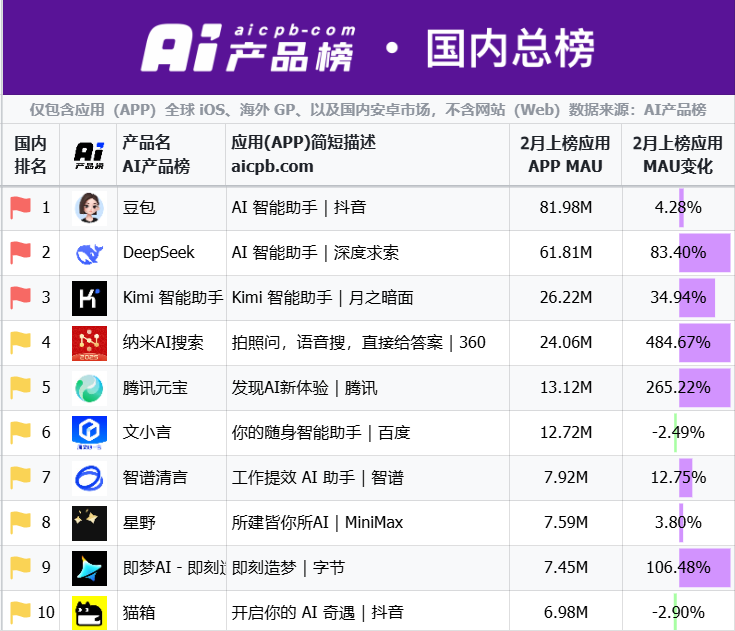
Image source: AI Product Rankings
Among them, the one that has been most vigorously promoted recently is Tencent Yuanbao. After leveraging the powerful DeepSeek, whether it is the national application WeChat's strong promotion in the search box and service bar or the obvious heavy investment in advertising, it has greatly promoted the downloads and activity of Yuanbao. There are even reports that Tencent spent 281 million yuan on Yuanbao's advertising in 27 days, covering almost all platforms including QQ, WeChat, and the APP rankings.
The results have also been good, with Tencent Yuanbao's monthly active users soaring from 2.9 million to 23 million. Over the past few weeks, it has followed closely behind DeepSeek, firmly occupying the second spot on Apple's free APP rankings.
However, the debut of the new Quark is taking a path of 'decentralizing ChatBot.'
As we all know, Alibaba actually has its own ChatBot, Tongyi, which also integrates the most cutting-edge AI in Alibaba's to C field. With the launch of a browser as the AI 'top pick' amidst the fierce competition among large model ChatBots, isn't it implying a desire to abandon Tongyi?
Judging from the data, this is not the case. According to AppGrowing, since the end of February this year, Tongyi Qianwen has gradually increased its investment in advertising. After releasing the open-source reasoning model QwQ-32B on March 6, the investment scale has continued to climb.
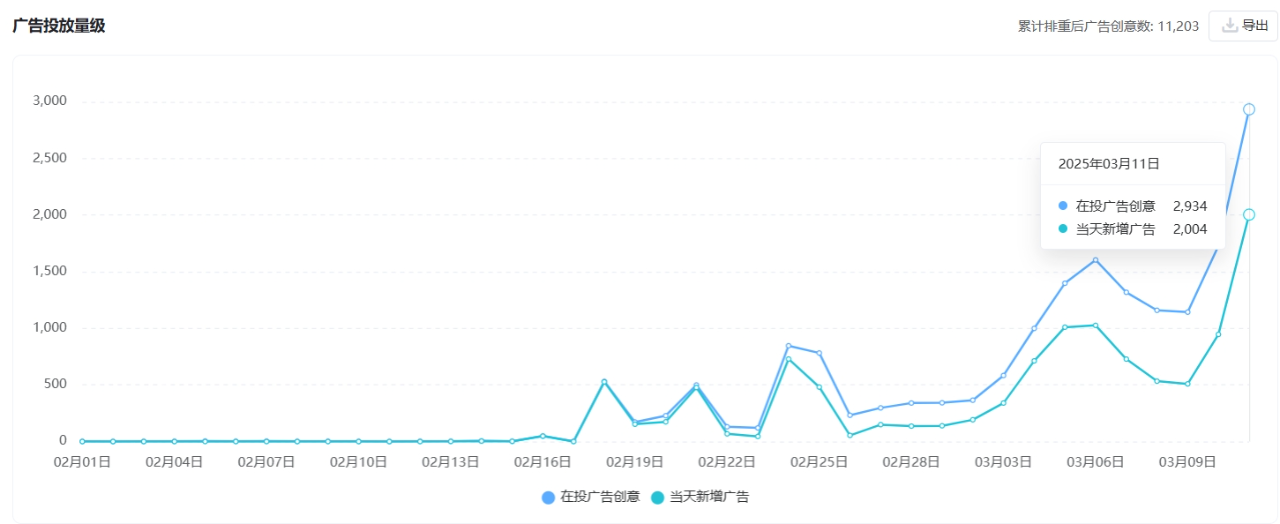
Image source: APPGrowing
So, why promote Tongyi vigorously while also elevating Quark to the position of 'Alibaba's AI flagship application'? There are two reasons: one is that major companies do not lack money, and the other is that Quark is actually following the path of ZhiXiaoBao.
Among them, it is not difficult to understand that major companies do not lack money. As Alibaba, which just announced in its financial report that it will increase investment in three major AI areas over the next three years, with more than 380 billion yuan to be invested in building cloud and AI hardware infrastructure, it is quite normal to continue increasing investment in ChatBot applications like Tongyi, which have countless possibilities in the future. After all, eggs should never be put in one basket.
Parallel to this, Alibaba clearly understands that compared to frantically investing in advertising to attract customers, reforming existing applications is actually more cost-effective. The withdrawal of ZhiXiaoBao was a precursor to this concept.
However, Alipay, which is seen by most people as merely a payment tool, does not actually have a sufficient user base or user stickiness, which led to the complete failure of ZhiXiaoBao. But Quark is completely different.
As a magical tool for downloading various resources, regardless of the purpose or past misdeeds, it is undeniable that Quark has actually become a must-have and daily-used software for a large group of people. Coupled with its identity as a browser, it is the perfect second experimental product for AI transformation.
In an ideal state, Quark will continue to use its original functions to retain existing users and gradually penetrate the mindset of 'using AI on Quark' to them, making them the first batch of 'AI users' of Quark. At the same time, with the support of Alibaba's to C capabilities, it will also attract more AI users from the outside to become Quark's 'permanent residents,' ultimately completing the transformation into 'Alibaba's AI flagship application'.
However, it is always easier to write a script than to walk the path. Whether it can follow the blueprint drawn by Alibaba depends on Quark's origins.
3
From a minimalist product for watching videos to a large AI team, can Quark transform AI users?
The story of Quark dates back a long time.
Eight years ago, although browsers were not completely barren, they were full of chaos. Countless useless information flows filled users' phones like hooligans, with various pop-up ads, promotions, and news information occupying most of users' visual space, making effective search increasingly difficult.
Seeing users' pain points, Quark emerged in users' vision with an extremely simplified UI as its selling point.
This incredibly clean and concise Quark quickly captured many users who were tired of seeing ads upon its launch, successfully carving out a niche in the browser market.
After securing a certain share of the browser market, Quark then set its sights on Baidu's cloud storage business, the leader in browsers, and embarked on a dangerous path of 'taking risks'.
The reason it is called 'taking risks' is mainly because the development path of Quark Cloud Storage's membership business has always been accompanied by the shadow of copyright disputes and illegal information governance. The core contradiction of its business model lies in the fact that many of the contents used to attract users pose copyright risks and illegal risks, but ultimately realize monetization through membership payments. The risks arising from this process continue to intensify.
At that time, Quark users only needed to copy the resource link from a pirated website and use the cloud collection function to achieve cloud playback of various illegal resources, technically providing a convenient channel for the dissemination of pirated resources. At the same time, pornographic content, which has always been strictly cracked down on by various platforms, has become easily accessible and freely downloadable ordinary resources on Quark.
And such behavior is naturally dealt with.
In 2022, the National Copyright Administration carried out a campaign to rectify illegal and infringing content on Quark, aiming to create a green, sunny, and healthy online environment. However, Quark, which relied on these resources to sell memberships, naturally did not stop.
A year later, in response to the issue of Quark platform disrupting the online ecosystem, the Cyberspace Administration of China instructed the Guangdong Provincial Cyberspace Administration to conduct legal interviews with relevant platform responsible persons, imposed a fine of 500,000 yuan on the Quark platform, and ordered it to immediately conduct a comprehensive and in-depth rectification and seriously deal with relevant responsible persons.
After investigation, it was found that the Quark platform failed to comply with relevant management requirements, presenting a large amount of pornographic and obscene information in search results and recommending pornographic and vulgar keywords to users. There were serious loopholes in the platform's information content security review and management, disrupting the online ecosystem, and the circumstances were particularly serious.
Regarding the relevant punishment, Quark Search also responded, stating that the company attaches great importance to it, sincerely accepts it, and resolutely implements it. At present, it has fully implemented rectifications in strict accordance with requirements and banned relevant illegal content.
Although Quark in 2025 has become much more restrained compared to a few years ago, it still contains a large amount of various gray content. Many netizens still rely on Quark Cloud Storage to watch resources and pornographic content lacking copyright.
With such a user base, product, and brand perception, having Quark shoulder the heavy responsibility of Alibaba Group's AI to C raises questions about how efficiently it can convert the current users into AI users. And if it completely relies on expanding users through functions, it is no different from starting from scratch, which also loses the initial significance of transforming Quark.
Besides the product genes, changes in Quark's personnel are also subtly making the 'new Quark' farther and farther away from the 'old Quark'.
From the small team that emerged from UC to the integration of the Tongyi to C team into Quark last year, to the appointment of a CEO, Quark's team has grown larger and larger. Quark's functions have also become more and more numerous and bloated. Does it still remember the slogan of 'minimalism' when Quark was launched?
Even if it scores 90 points in the exam of vigorously promoting AI to C, can it provide a better experience than Baidu? And will it become just another ordinary product in a series of competitions?
However, no matter what, the emergence of the new Quark is a declaration of war against Baidu.
And how will Baidu Search, whose slogan has been changed back to the first version of 'Baidu it, and you'll know,' be able to 'reject' Quark with the support of the newly released ERNIE Bot large models 4.5 and X1, and how to retain users who left due to Quark's resources beyond large model capabilities, have become the biggest highlights for both parties in the future.
But regardless of who wins or loses, Quark, which is facing Baidu Search head-on, will definitely keep up closely, and the game between the two sides has just begun.
Editor: Ding Li

